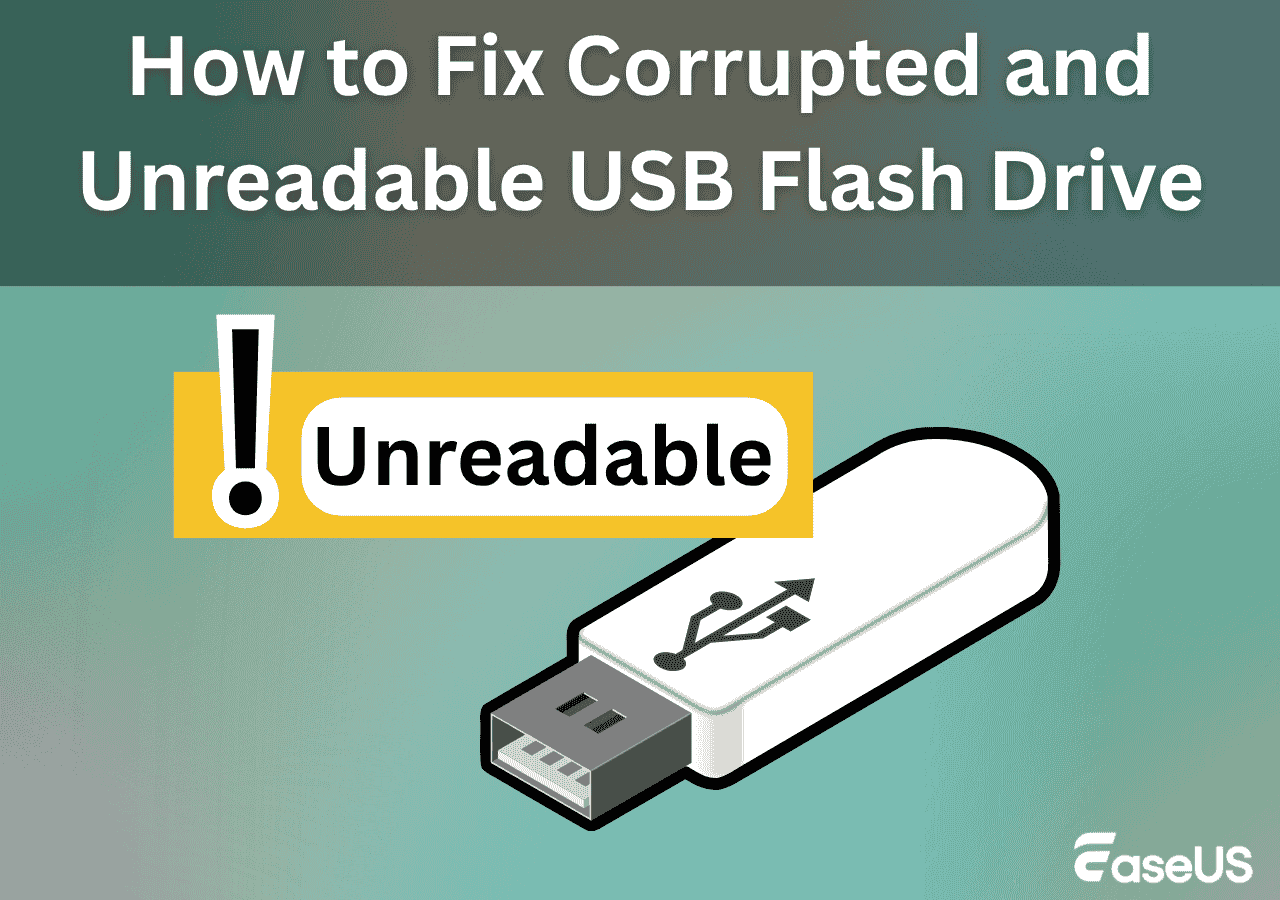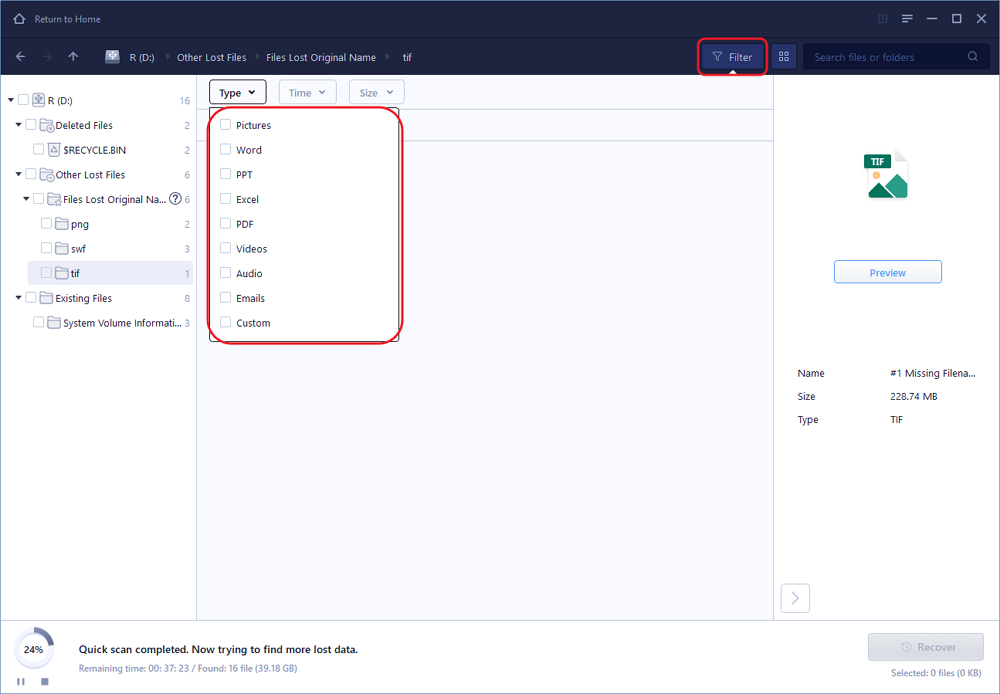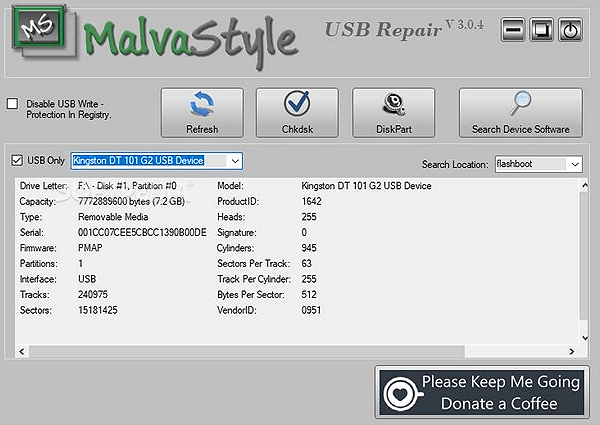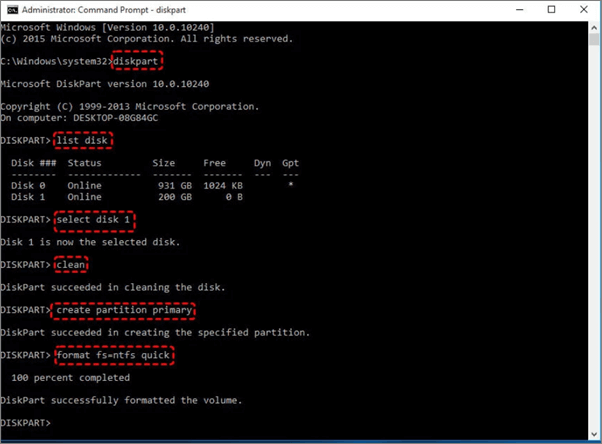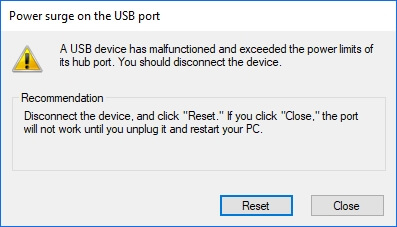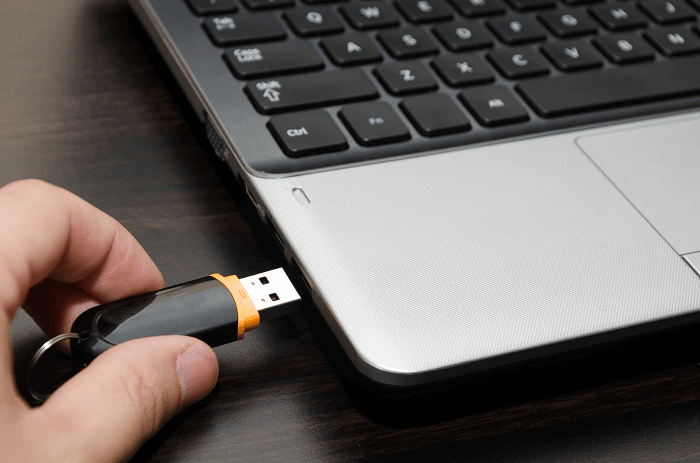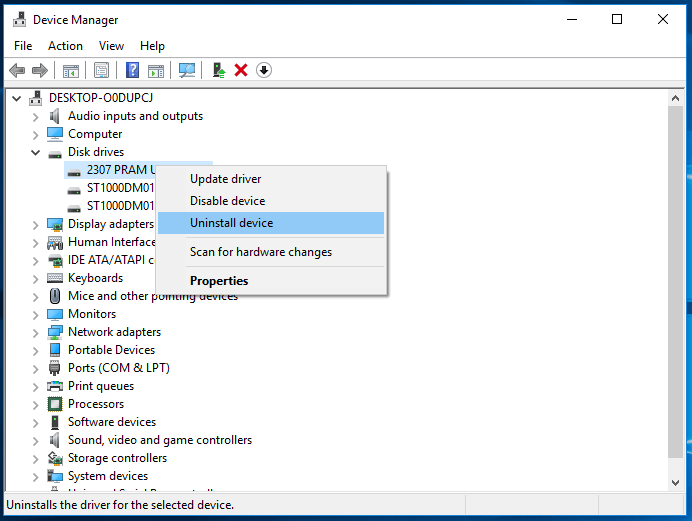-
![]() How to Fix Corrupted and Unreadable USB Flash Drive in 2025
How to Fix Corrupted and Unreadable USB Flash Drive in 2025 December 12,2025
December 12,2025 6 min read
6 min read -
![]()
-
![]()
-
![]()
-
![]()
-
![]() How to Recover Files from Not Recognized USB Flash Drive
How to Recover Files from Not Recognized USB Flash Drive December 12,2025
December 12,2025 6 min read
6 min read -
![]() Recover Deleted Files from USB Without Software [2025 Updated]
Recover Deleted Files from USB Without Software [2025 Updated] December 14,2025
December 14,2025 6 min read
6 min read -
![]()
-
![]() Free | How to Recover Files from Formatted USB/Pen Drive
Free | How to Recover Files from Formatted USB/Pen Drive December 12,2025
December 12,2025 6 min read
6 min read -
![]() Fix USB Drive Not Showing Up in Windows10/11 | 8 Excellent Ways
Fix USB Drive Not Showing Up in Windows10/11 | 8 Excellent Ways December 12,2025
December 12,2025 6 min read
6 min read
Page Table of Contents
In Windows, open File Explorer, choose View, and then tick the "Hidden items" box to see hidden files on a USB device. On a Mac, type com.apple.finder using the Terminal command's defaults. killall Finder after AppleShowAllFiles -bool true.
These days, many people store their data on USB flash drives, memory cards, and other external storage devices. However, sometimes these files become missing after a system update, program installation, virus attack, or for other unknown reasons. You didn't intentionally delete them or format the disk at any time. In this case, when USB files and folders are invisible at their location, how to show hidden files in USB?
Here on this page, you will learn how to unhide files and folders on USB using three methods, including Windows, CMD, and third-party USB drive recovery software.
Why USB Drive Have Hidden Files
For a few main reasons, USB drives frequently include hidden files: to guard against unintentional deletion or alteration, to conceal dangerous files, such as those produced by viruses, or to protect system files. Unless you explicitly set up the settings to show them, these hidden files are still on the drive but are not visible in File Explorer.
The hidden files and folders on a USB drive are defined as a group of items that take up disk space but don't show up normally. These files might be set as hidden in Windows by default, or these are made hidden by a virus. If you lost important documents, pictures, or videos and you know you didn't delete any of those, it's likely that they're hidden somewhere. You need to take appropriate measures to unhide files from the USB show portable device as soon as possible.
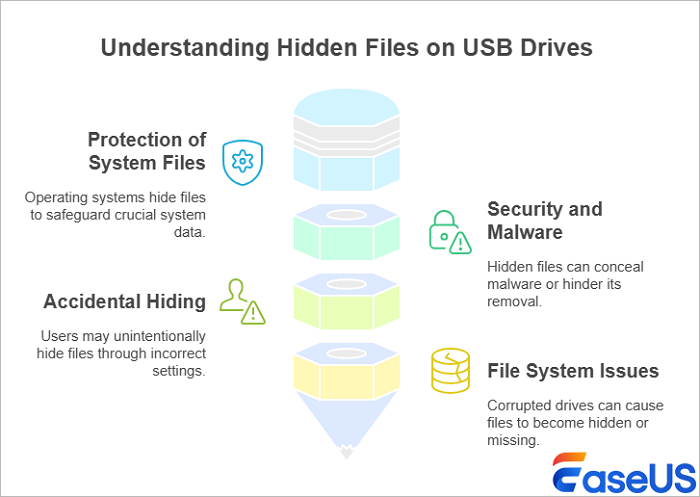
How to Show Hidden Files and Folders on a USB Pen Drive
Many people have had a similar experience and may have felt helpless to see that all of their files have vanished. Before introducing hidden file recovery solutions that allow you to view, check, and show hidden files on various types of USB drives, we would first like to talk about how the files can go missing in the first place. If your USB drive, memory SD card, or other storage device shows no data, it might have been infected with a virus or malware. Malware can sometimes mark the files on your device as hidden so that you cannot see them when you open the device.
Fortunately, it is possible to recover virus-infected files from USB drives, hard drives, or memory cards. Here, you will learn how to fix a blank SD card and USB show hidden files using three effective ways.
You might want to watch this video tutorial first:

Solution 1. Recover Hidden Files on a USB Using Software
In case neither the Control Panel nor the CMD help shows the hidden files, EaseUS Data Recovery Wizard becomes an effective solution. This program is professional recovery software that helps you recover hidden files from pen drives, hard drives, and multiple storage devices such as USB flash drives, memory cards, external hard drives, and more.
- Recover any data that has been showing up in the result during the process of the scan.
- Initiate, pause, or resume a USB data recovery scanning process at any time so you can customize your data recovery schedule.
- Support deleted file recovery, formatting, hard drive corruption, virus attack, system crash under different situations.
By performing the 3-step hidden file recovery, you'll see hidden files showing up again.
Step 1. Select the virus infected drive to scan
Run EaseUS virus file recovery software on your Windows PC. Select the disk attacked by the virus to scan for lost or hidden files. Note that:
- If it's an HDD where files were hidden or deleted by virus, it's better to install the software on a different volume or an external USB drive to avoid data overwriting.
- If the infected device is an external hard drive, flash drive or memory card, it doesn't matter to install the software on the local drive of the computer.
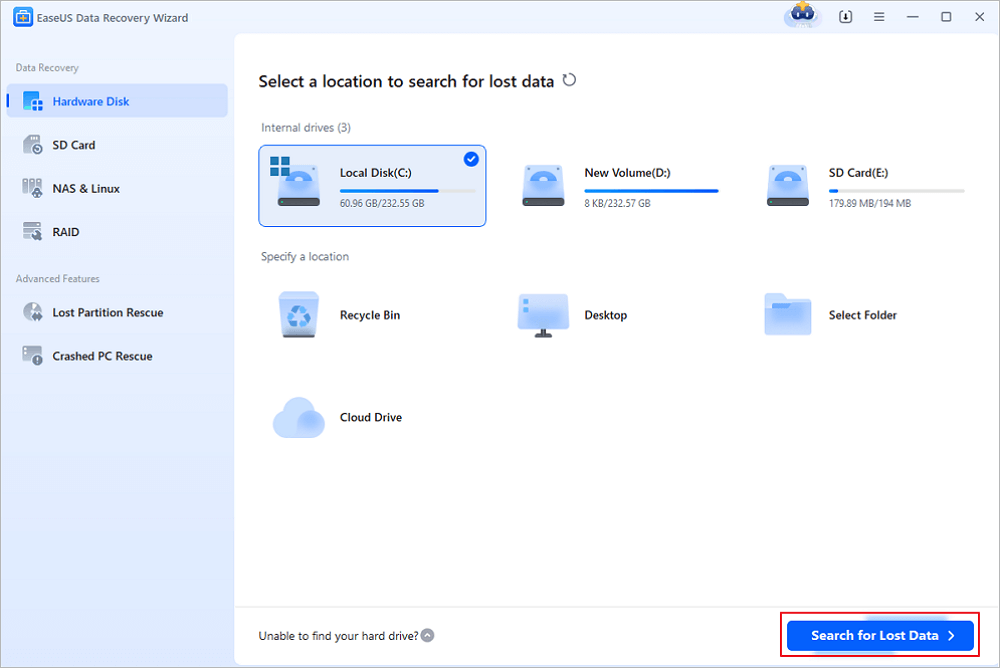
Step 2. Check all scanned results
EaseUS Data Recovery Wizard will immediately start a scan process to find your deleted or hidden files on the virus infected hard drive. To quickly locate the wanted files, you can use the Filter or search box feature to display only the pictures, videos, documents, emails, etc.
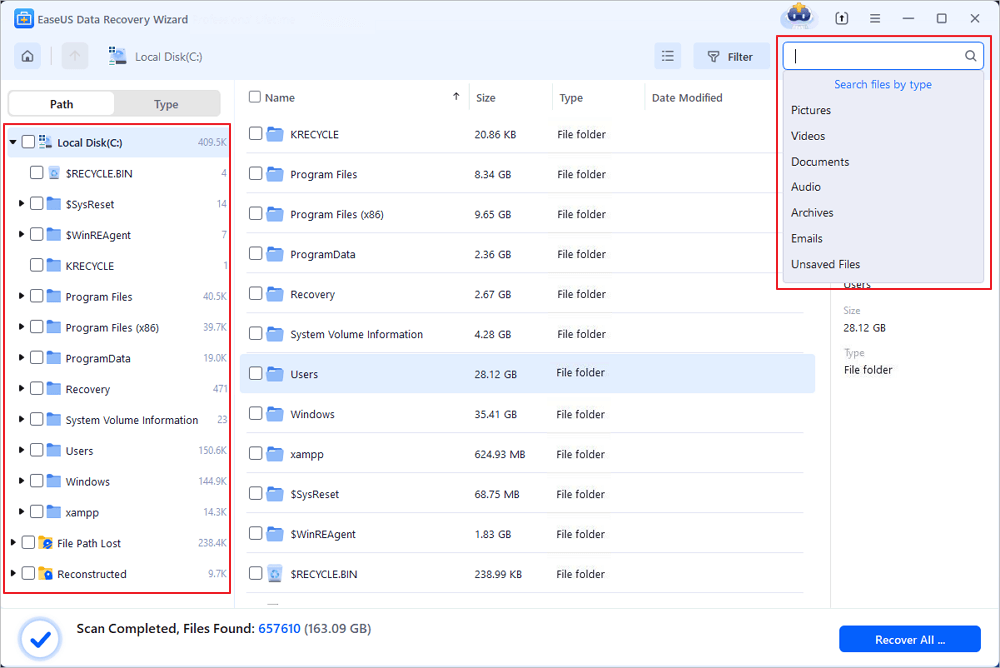
Step 3. Preview and recover deleted/hidden files
When the process finishes, you can preview the scanned files. Select the files you want and click the "Recover" button. You should save restored files to another secure location or Cloud drive, not where they were lost.
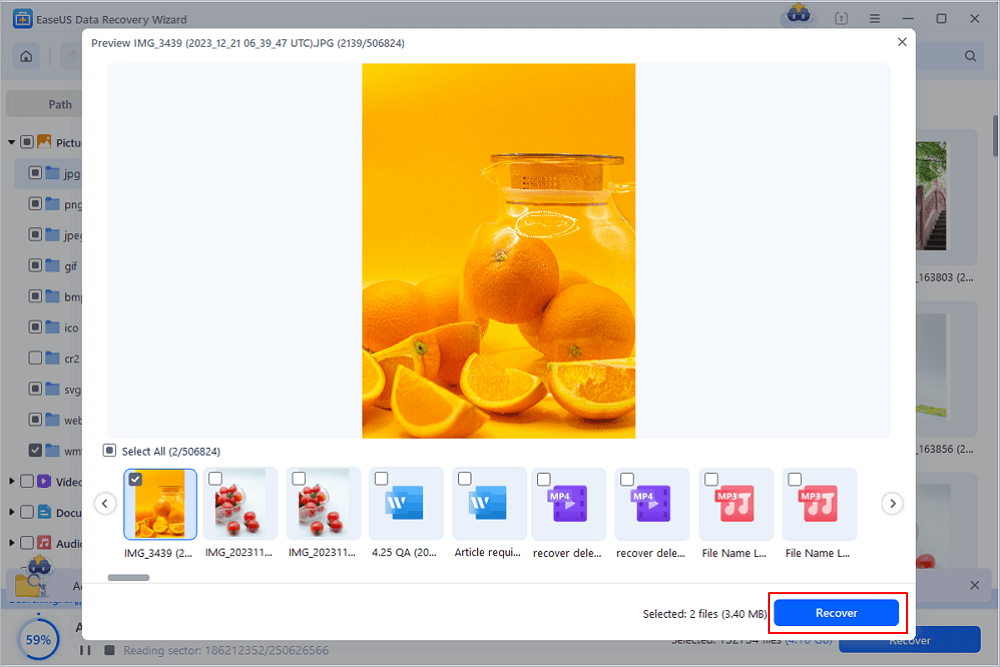
Review:
- Trustpilot: I rarely write reviews, but when I lost several large files, EaseUS saved me. A few search engines recommended EaseUS, so I decided to try it even though, at my age, I am challenged by technology and new software.
- EaseUS was easy to use, and it recovered almost ALL my files, including videos and PowerPoint presentations.
This table demonstrates how to show hidden files on a USB drive:
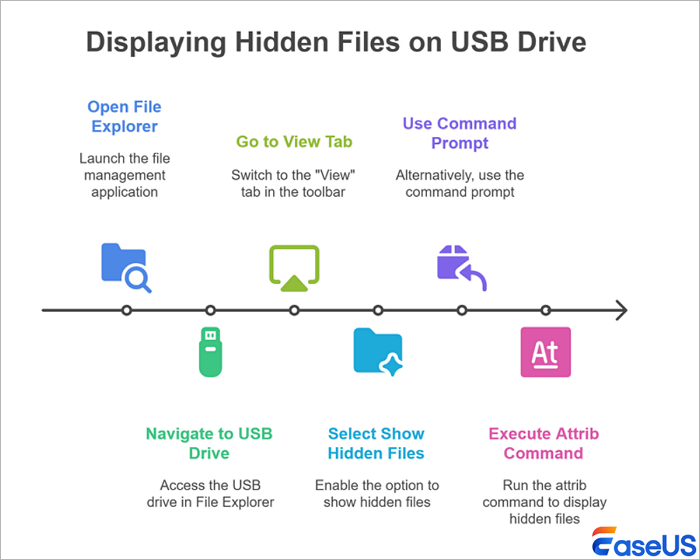
Solution 2. Show Hidden Files on USB Using Windows File Option
Step 1. In Windows 11/10/8/7, press Windows + E to bring up the Windows Explorer.
Step 2. In the Folder Options or File Explorer Options window, click the View tab. Under Hidden files and folders, click the Show hidden files, folders, and drives option.

Step 3. Click Apply, then OK. You'll see the files on the USB drive.
|
💡TIP: How to show the hidden USB drive in Windows 10? In Windows 10, you should modify the File Explorer settings to display hidden files and folders to view hidden data on a USB drive. Navigating to File Explorer Options, choosing the View tab, and then selecting to see hidden files, folders, and drives will accomplish this. It may also be necessary to uncheck the "Hide protected operating system files" option if you wish to view those as well. |
Solution 3. USB Show Hidden Files CMD
Command Prompt (CMD) is the second choice when you want to show hidden files on external hard disks, USB drives, memory cards, or other storage devices. Here, you will learn the full attrib command for hidden files.
To unhide files using CMD or show hidden files in USB attrib command, follow these three steps:
Step 1. Properly connect the USB drive to your computer.
Step 2. Press Windows + X keys to bring up a menu and click Command Prompt (Admin) in this menu.
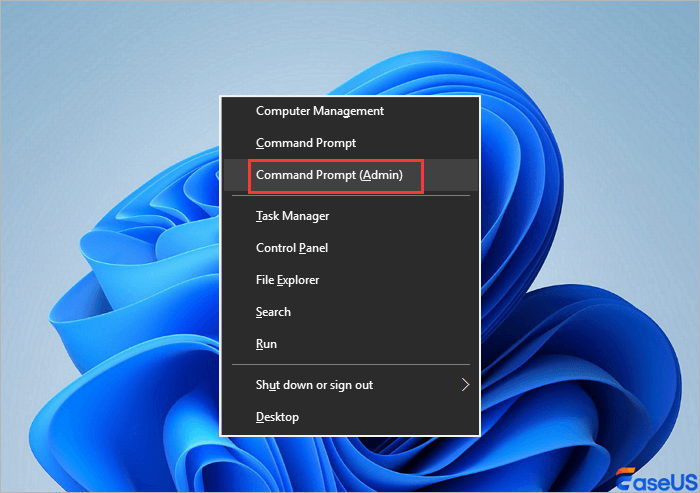
Step 3. Enter attrib -h -r -s /s /d G:\*.* (replace G: with the drive letter for your device) in the Command Prompt window and press Enter.
After completing these steps, access your USB flash drive, hard drive, or memory card to verify that all hidden files are visible.
Show Hidden Files with CMD Alternative Tools
Manual execution of the command line is suitable for computer professionals, since incorrect commands can do more harm than good. Therefore, for security and usability, we strongly recommend you try an automatic command line alternative - EaseUS CleanGenius. It is a practical tool that enables you to check and fix file system errors, enable/disable write protection and update your system with one-click instead of typing intricate command lines.
Follow the simple steps below to show hidden files with this 1-click-fix software.
Step 1. DOWNLOAD EaseUS CleanGenius for Free.
Step 2. Start EaseUS CleanGenius, choose "Optimization" on the left panel. Next, click "File Showing" on the right panel.
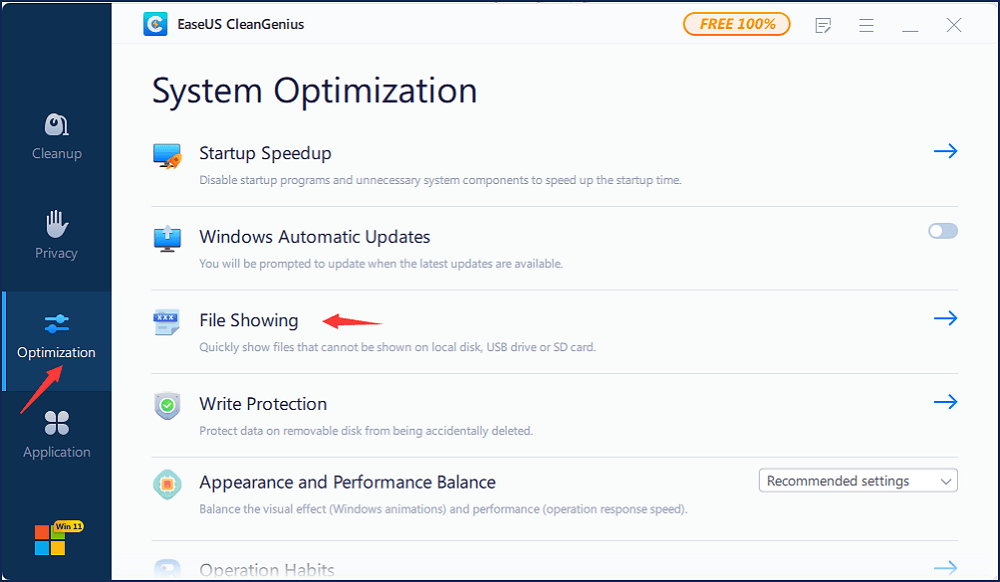
Step 3. Select the hard drive and click "Execute".
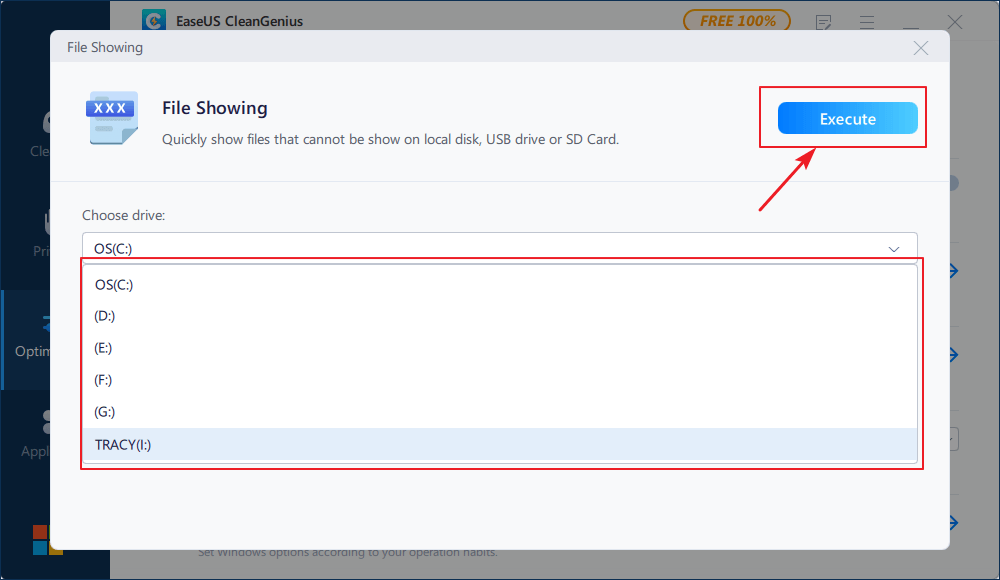
Step 4. After the operation completes, click the here link to check the hidden files.
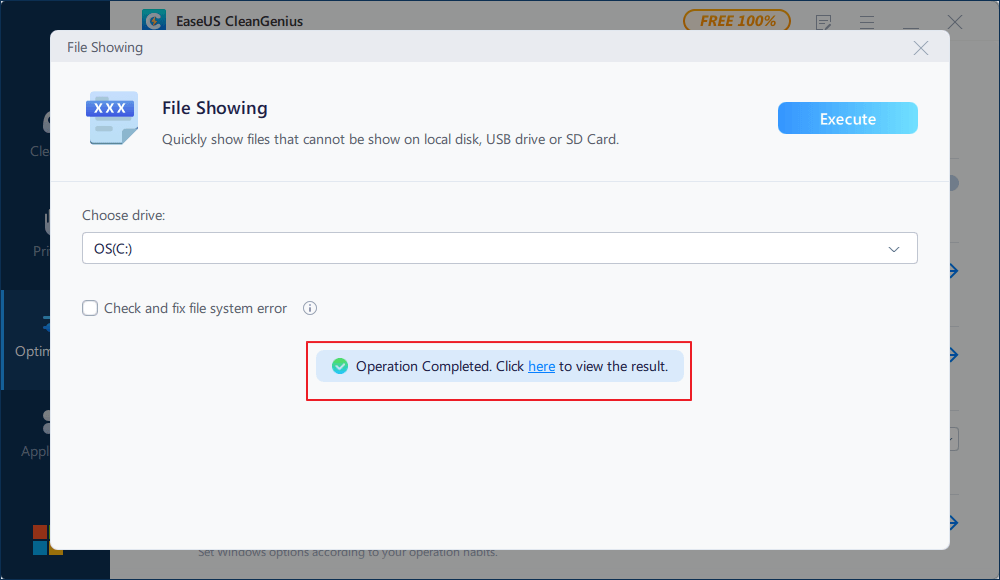
If you can't find the files you're looking for, consider another solution: recover hidden files on a USB flash drive and memory card with EaseUS data recovery software.
Show Hidden Files in USB FAQs
To help resolve your queries, we have collected 3 questions you might be interested in.
1. Why can't I see my files in USB?
A virus attack is the most likely reason for this problem. Other factors, besides virus infestation, could result in a USB not showing files:
- Your USB drive's files and folders are hidden
- Unintentionally deleted data
- Your computer's OS does not recognize the file system
2. How do I see hidden files on my USB?
Several factors can cause files on a USB device to become hidden. To reveal or recover hidden files on USB flash drives, hard drives, memory cards, and pen drives that have been infected with viruses, use Control Panel, CMD, and EaseUS data recovery software.
3. How do I recover hidden files on my SD card?
To recover hidden files on SD cards, we advise using EaseUS Data Recovery Wizard.
- Attach your Android SD card to your computer.
- Search for the desired files on the SD card.
- View the documents.
- Recover files that are buried on the SD card.
Was this page helpful?
-
Brithny is a technology enthusiast, aiming to make readers' tech lives easy and enjoyable. She loves exploring new technologies and writing technical how-to tips. In her spare time, she loves sharing things about her game experience on Facebook or Twitter.…
-
Mahesh is an experienced computer tech writer. He's been writing tech how-to guides for about 8 years now and has covered many topics. He loves to teach people how they can get the most out of their devices.…

20+
Years of experience

160+
Countries and regions

72 Million+
Downloads

4.9 +
Trustpilot Score


Free Data
Recovery Software
Recover data up to 2GB for free!
